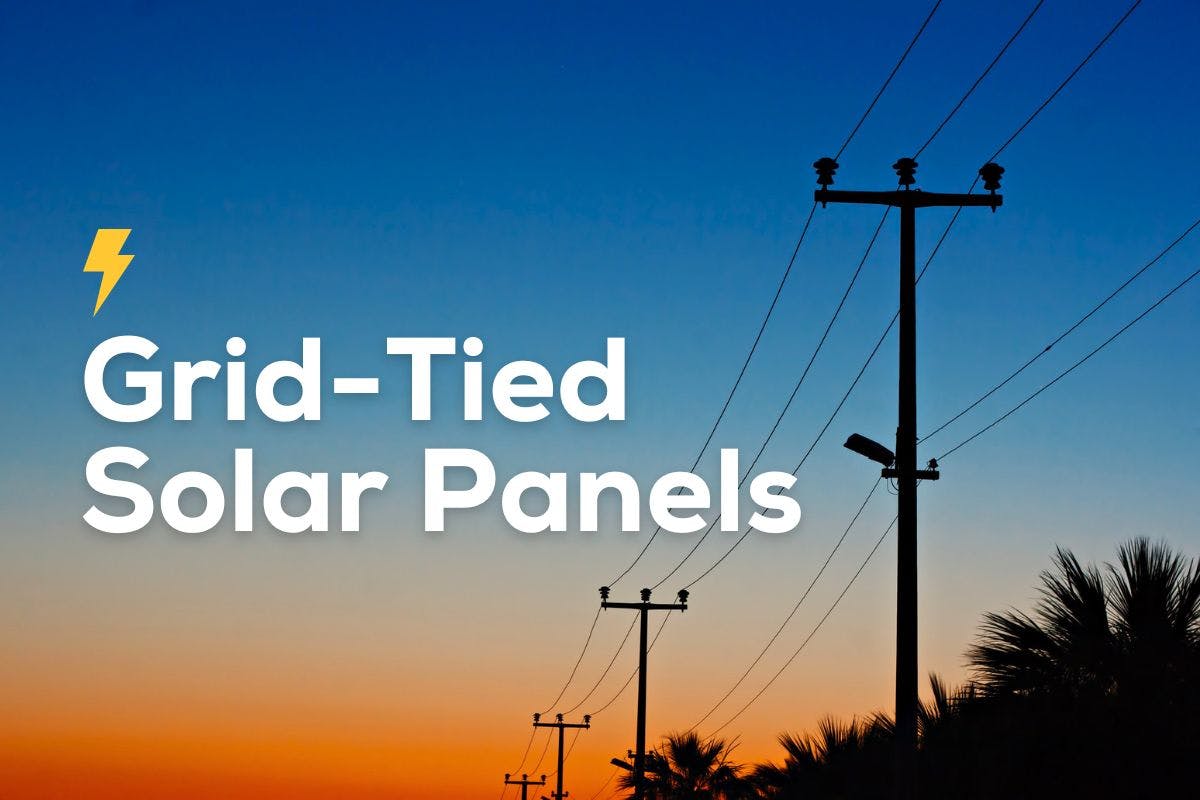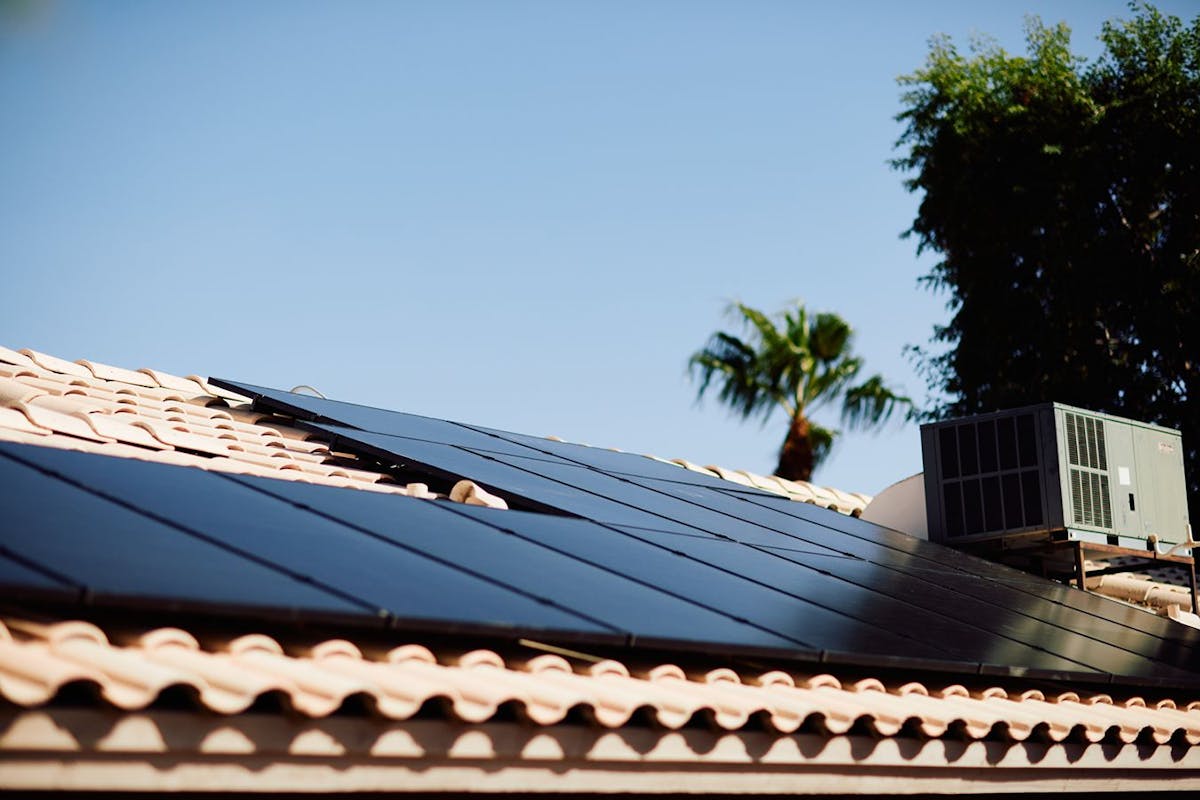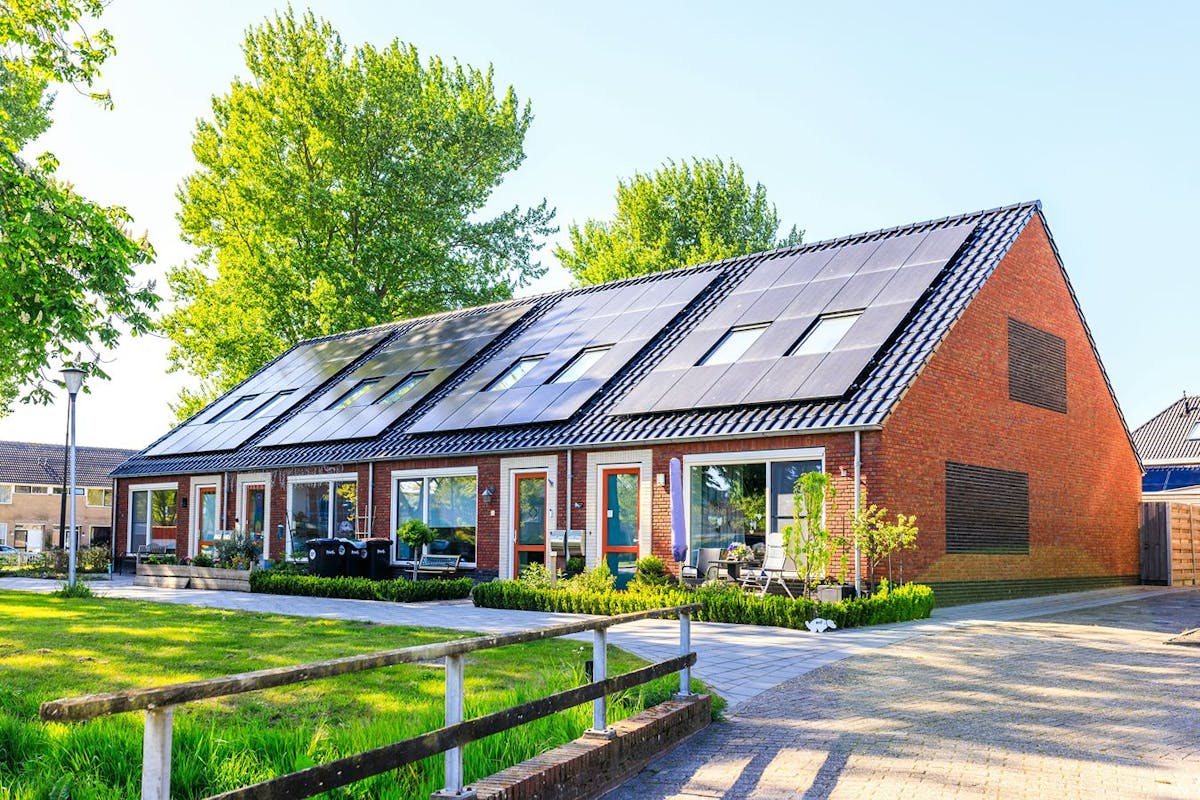Grid-Tied Solar Panels: How Most People Go Solar
Last edited

Author
Andrew Giermak
Solar and Electrification Writer and Editor

Editor
Andrew Blok
Electrification and Solar Writer and Editor

Most home solar panels you see are also grid-tied solar panels. Grid-tied simply means the system is connected to the area’s utility power grid. Being connected to the grid is typically about greater convenience, savings, reliability, and security.
In this guide, we’ll go over how a solar system and still having utility power when you need it is usually the right choice. You can maximize your savings and have the energy independence you want with home solar power connected to your local utility grid.
See how much you can save by going solar with Palmetto
What Grid-Tied Solar Means
Also known as grid-tie, on-grid, or utility-interactive systems, grid-tied solar panels can be classified as any photovoltaic (PV) energy system connected to the electric grid.
Grid-tied solar panels produce electricity and transmit it through the power lines connected to your home.
Nearly all solar panels for residential properties are grid-tied, except for entirely off-grid installations in remote locations. Hybrid solar systems where solar panels can charge battery storage that can temporarily pivot off-grid still maintain a grid connection.
How Grid-Tied Solar Panels Work
For a grid-tied solar system to work, your panels must be permitted and installed up to the locally enforced building and electrical codes. Once approved for interconnection by the utility, your solar panels can start generating clean electricity.
Any power produced by your system but not used by your house is sent back to the grid.
If you live in an area with net metering or net billing plan, your electric meter will track the electricity sent to the grid, which will earn you credits to offset the electricity you had to buy from it.
Grid-tied solar system components
Here are the five most important components of a grid-tied solar energy system.
| Component | Function |
|---|---|
| Solar Panels | Solar panels harness sunlight and generate direct current electricity. |
| Mounting Equipment | Every solar energy system requires mounting materials to secure the panels and receive direct sunlight. |
| Inverter System | An inverter system converts the direct current (DC) into alternating current (AC). Grid-tied systems require a high-voltage grid-tie inverter to export power to the utility lines. |
| Smart Utility Meter | While traditional utility meters only track electricity consumption, bi-directional smart meters monitor energy produced on your property and sent to the grid. |
| Power Disconnects | In case of an emergency or a necessary system repair, AC and DC power disconnects are a legally required safety feature for all grid-tied solar panel installations. |
Grid-Tied Solar System Price
The total price of your grid-tied solar system will depend on many factors associated with your unique installation, including the system size, the components used, and how you choose to pay for your home upgrade.
With all that in mind, the average cost of solar panels in the United States is around $3.30 per watt (excluding financing), according to some estimates. While solar prices vary across the country, and your gross costs can be significantly lowered through incentives like the federal solar tax credit, an average 8 kilowatt solar energy system costs around $26,400 ($3.30 per watt x 5,000 watts) in 2023.
See how much you can save by going solar with Palmetto
Grid-Tied Solar System Payback Period
The upfront cost of a solar power system and installation is a significant expense, but it can pay off in the long run.
When you install a home solar system, it’s like you’re locking in a set rate for your electricity for the life of your solar panels, saving you from decades of rising utility rates.
You can estimate a solar panel system’s payback period by adding up all the expenses associated with going solar and dividing it by your annual electricity bill savings in avoided utility electricity and net metering credits (if available in your area).
With a typical solar payback period clocking in between 6 and 10 years, solar panels that last for 25 years or more have the potential to pay for themselves many times over.
What if I Want to Go Off Grid With Solar Panels?
It’s possible, but uncommon, to go off the grid with solar power. Off If your home is completely disconnected from the grid, your solar panels will need to generate all your electricity.
Most people do not go off the grid because it typically requires huge expense.
Being connected to the grid, even if you try to use it as little as possible, gives you the safety of grid power at times you need it and the ability to utilize net metering or similar plans that maximize your savings from solar power.
Your Home and Grid-Tied Solar Panels
To put it simply, the majority of solar panels in the United States are tied to the electricity grid, helping homeowners go green and save money on energy costs. Grid-tied solar panels can significantly lower your electricity expenses with emission-free power production right on your roof.
If you are interested to see how much you can save with a grid-tied solar energy system, you can calculate your solar savings or contact Palmetto today.
See what solar can do for you:
Frequently Asked Questions
Does installing solar panels mean you’re off grid?
Most people who go solar are still on the grid. Most residential solar power systems are connected to the local utility grid. A relatively small percentage of people using solar power are off the grid with their electricity.
What are the benefits of remaining tied to the grid when you go solar?
A grid-tied solar system can maximize your savings from solar power and reduce the solar payback period of your system. You will also have reliable power when solar power isn’t available (such as every night) without needing battery storage. No need for a battery will also reduce the upfront cost of a home solar system.
Will I have an electric bill with solar panels?
If you have grid-tied solar panels, you will get a monthly electric bill. You may, depending on net metering policies and your energy consumption, have a bill with only certain fees or a small amount owed.
Disclaimer: This content is for educational purposes only. Palmetto does not provide tax, legal, or accounting advice. Please consult your own tax, legal, and accounting advisors.


